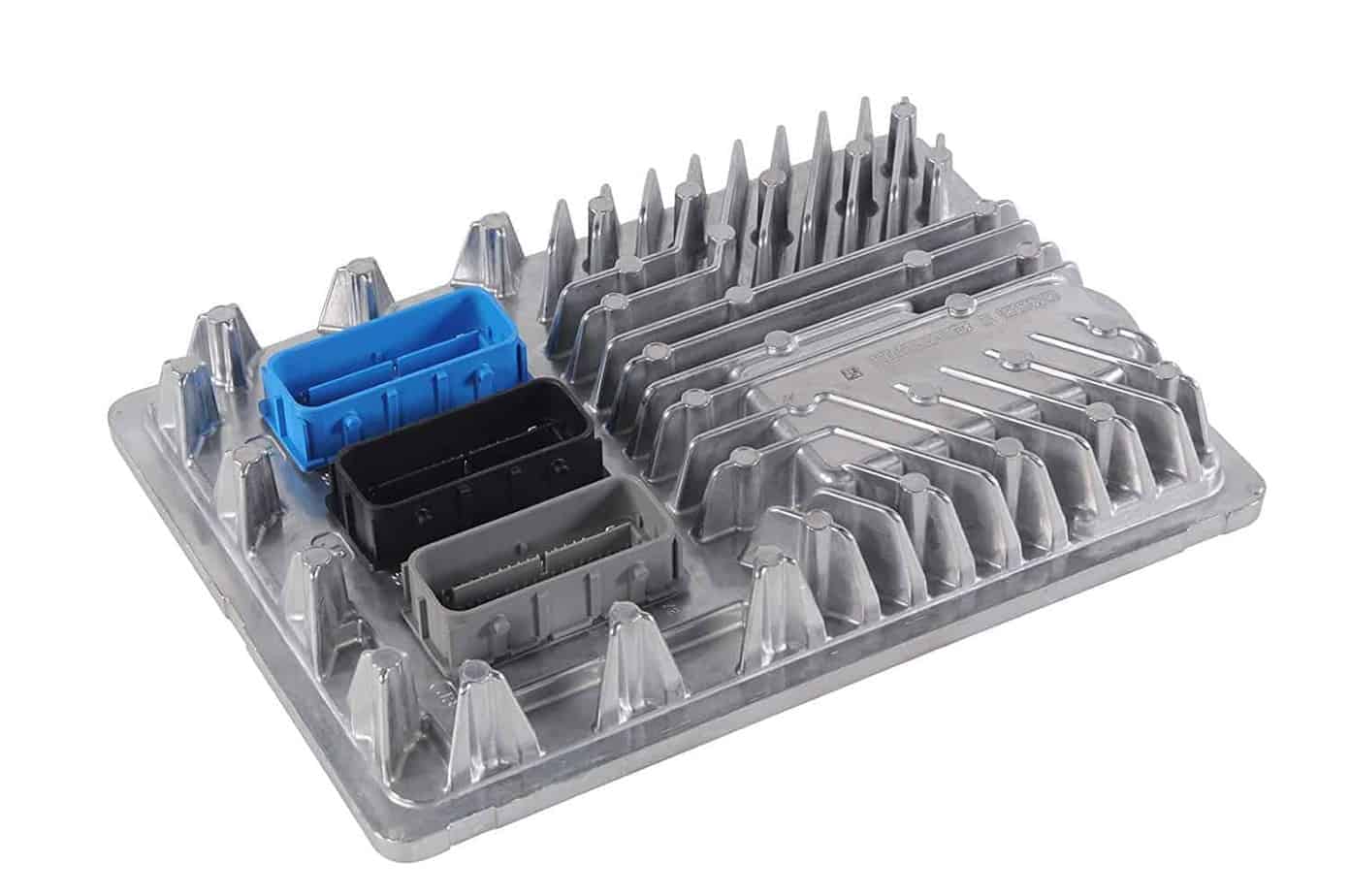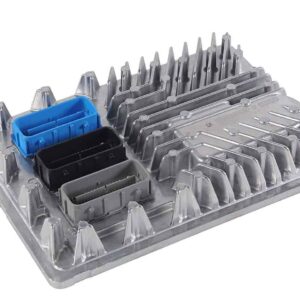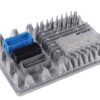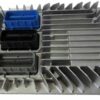Restore Your Vehicle’s Brainpower and Performance
Is your Cadillac, Chevrolet, or GMC acting erratically? Experiencing frustrating issues like a persistent check engine light, poor fuel economy, stalling, or a complete no-start condition? These are classic signs that the heart of your vehicle’s electronic system—the Engine Control Module (ECM)—is failing. As a technician with over two decades of experience, I’ve seen firsthand how a faulty ECM can cripple an otherwise healthy vehicle. This isn’t just an inconvenience; it’s a critical failure that compromises performance, fuel efficiency, and reliability.
This replacement Engine Control Module, part number 12674052, is the definitive solution. We take the guesswork and dealership hassle out of the equation. Before we ship, our experts will program the module with the latest GM-certified software, specifically matched to your vehicle’s unique VIN. This ensures that all factory parameters for your engine and transmission are perfectly calibrated, restoring the precise control your vehicle had when it left the factory. A properly functioning 2017 CTS Engine Module is essential for managing everything from fuel injection and ignition timing to emissions systems and transmission shifting.
From the Diagnostic Bay: The Phantom Misfire Case
A customer brought in a 2017 Sierra 1500 with a check engine light and a rough idle that his previous mechanic couldn’t solve. They had replaced plugs and coils, but the problem persisted with a P0300 (Random Misfire) code. My scan tool showed no communication with the ECM on certain data PIDs. Instead of throwing more parts at it, I checked the ECM’s power and ground circuits—they were solid. This pointed directly to an internal processor failure within the module itself, a common issue I’ve diagnosed on hundreds of these platforms. We installed a VIN-programmed ECM, performed the crankshaft variation relearn, and the truck ran perfectly. The issue wasn’t the ignition system; it was the computer failing to command it correctly. This highlights why a reliable 2017 CTS Engine Module is the foundation of a proper diagnosis and repair.
Is Your GM Vehicle Showing These Red Flags?
- ✔ Persistent Check Engine Light (CEL) that won’t clear.
- ✔ Stalling, hesitation, or rough idling.
- ✔ Drastic decrease in fuel mileage.
- ✔ Vehicle entering ‘limp mode’ with reduced power.
- ✔ Complete no-start condition where the engine cranks but won’t fire.
- ✔ Communication error codes like U0100 (Lost Communication With ECM/PCM).
- ✔ Internal module failure codes such as P0601, P0606, or P062F.
Your Straightforward Installation Guide
- ✔ Safety First: Always disconnect the negative terminal from your vehicle’s battery before starting any electrical work.
- ✔ Locate the ECM: On most listed models, the ECM is found in the engine compartment (typically on the driver’s side) or, on the Corvette, under the passenger-side cowl. Consult a service manual for your specific vehicle if unsure.
- ✔ Disconnect and Remove: Carefully unplug the electrical connectors. There are typically locking tabs that need to be released. Once disconnected, unbolt the old module from its mounting bracket.
- ✔ Install the New Module: Bolt the new, pre-programmed ECM into place and securely reconnect all electrical harnesses. Ensure they click into place.
- ✔ Reconnect Battery: Reattach the negative battery terminal.
- ✔ Perform Relearn Procedures: Start the vehicle. If it fails to start, a Vehicle Theft Deterrent (VTD) relearn is necessary. This, along with other potential procedures like a crankshaft variation relearn, must be completed using a professional scan tool with access to GM’s TIS2Web or Techline Connect service. This step is the responsibility of the installer.
Verified to Fit These GM Models
This module is a direct replacement for part numbers 12692068, 12704476, 12686382, 12674052, 12674472, and 12678815. Please verify your part number and check the detailed fitment list below to ensure compatibility with your specific vehicle and options.
- Cadillac ATS 2017: (LH engine compartment), 3.6L, VIN Y (8th digit, opt LF4)
- Cadillac CTS 2017: 6.2L (supercharged)
- Cadillac CTS 2017: 3.6L, VIN 8 (8th digit, opt LF3, twin turbo)
- Cadillac Escalade / ESV 2017: (engine compartment)
- Cadillac XTS 2017: (3.6L), VIN 8 (8th digit, opt LF3)
- Chevrolet Corvette 2017: (RH cowl under dash)
- Chevrolet Silverado 1500 2016: (LH front engine compartment), ID 12674472
- Chevrolet Silverado 1500 2017: (LH front engine compartment)
- Chevrolet Silverado 1500 2018: (LH front engine compartment), ID 12686382
- Chevrolet Suburban 1500 2017: (LH front engine compartment)
- Chevrolet Tahoe 2017: (LH front engine compartment)
- GMC Sierra 1500 / Denali 1500 2016: (LH front engine compartment), ID 12674472
- GMC Sierra 1500 / Denali 1500 2017: (LH front engine compartment)
- GMC Sierra 1500 / Denali 1500 2018: (LH front engine compartment), ID 12686382
- GMC Yukon / Yukon XL 1500 2017: (LH front engine compartment)
Choosing our pre-programmed 2017 CTS Engine Module is the most efficient way to get your vehicle back to peak operating condition without the high costs and scheduling delays of a dealership service center.
Your Vehicle Identification Number (VIN) allows us to program the Engine Control Module with the exact factory software and calibrations for your specific make, model, engine, transmission, and emissions equipment. This ensures perfect compatibility and performance.
The VTD system pairs your ECM to your vehicle’s ignition and security system. When a new ECM is installed, this link is broken. A relearn procedure, done with a GM-specific scan tool, re-establishes this connection, allowing the vehicle to start. This is a standard security measure on all modern GM vehicles.
The VTD relearn and other procedures like the crankshaft variation relearn require professional-grade diagnostic tools with access to GM’s TIS2Web/Techline Connect software. Most DIY mechanics do not have this equipment, so you will likely need to have a qualified automotive shop perform these final steps after installation.
Failing to perform necessary relearns can result in issues like a persistent check engine light, incorrect transmission shifting, or inaccurate fuel trim readings. For the vehicle to operate as designed, all required setup procedures must be completed.
This module will fix any issues directly caused by a faulty ECM. However, it’s crucial that the vehicle has been properly diagnosed. This part will not fix problems related to other failed components, such as bad sensors or wiring issues.



